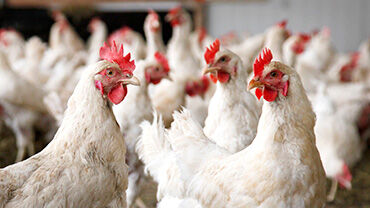ECDC assesses EU/EEA zoonotic avian flu preparedness and issues investigation protocol
To assess the level of preparedness of EU/EEA Member States to respond to zoonotic avian flu outbreaks, ECDC has carried out two surveys - one assessing the laboratory capacity for molecular diagnosis and characterisation of zoonotic influenza viruses, and the other focusing on measures applied to protect exposed people during outbreaks of highly pathogenic avian influenza.
Both surveys highlighted key strengths and commonalities amongst Member States, whilst also identifying important areas of divergence and opportunities for further development. Andrea Ammon, ECDC Director, says:
“Although cases in humans are very rare and have until now not occurred in the EU/EEA, zoonotic avian influenza has pandemic potential. An up-to-date review of the laboratory capacity and measures to protect people during outbreaks in animals is crucial in order to maintain an adequate level of preparedness.”
Almost all responding countries reported having guidelines in place for the management of infected animals in highly pathogenic avian influenza outbreaks in poultry or detections in wild birds for farmers, cullers, veterinarians and members of the public with direct exposure to dead wild birds. There was also broad alignment in terms of personal protective equipment recommendations in the context of poultry outbreaks, as well as testing of those humans reporting respiratory symptoms following highly pathogenic avian influenza exposure.
Nearly all laboratories participating in the laboratory survey reported a substantial level of expertise, capability and capacity to detect avian and other sources of zoonotic influenza viruses and the majority can also genetically characterise these viruses. In addition, two thirds of the laboratories are capable of isolating zoonotic influenza viruses and testing for antiviral drug susceptibility and one third of the laboratories can further antigenically characterise these viruses.
To assist countries in their response to potential human exposure to avian influenza viruses, ECDC has also issued an investigation protocol to be used in the potential event of human cases of zoonotic avian influenza virus infection in EU/EEA. This sets out measures for the follow-up and management of individuals exposed to infected animals and human cases of zoonotic avian influenza, and for the public health management of possible and confirmed human cases. It also provides guidance for case detection, investigation of other potential cases, testing, contact tracing, case reporting and notification, risk communication and preventive measures.
Outbreaks of avian influenza in wild birds and poultry farms in the EU/EEA continue and more outbreaks are expected over the next few weeks, as summarised in the new quarterly ECDC/EFSA/EURL avian influenza overview, also released today.
Read the surveys and overview
Assessment
EU/EEA country survey on measures applied to protect exposed people during outbreaks of highly pathogenic avian influenza
ECDC initiated a survey of EU/EEA countries to evaluate preparedness planning and risk mitigation initiatives implemented at the country level for people exposed to highly pathogenic avian influenza virus A(H5N1).
Assessment
Survey report on laboratory capacity for molecular diagnosis and characterisation of zoonotic influenza viruses in human specimens in EU/EEA and the Western Balkans
The aim of this survey was to review the expertise, capabilities and capacities for detection and characterisation of avian and other zoonotic influenza viruses in national influenza reference laboratories in the European Union/European Economic Area (EU/EEA), in members of the European Reference Laboratories for influenza (ERLINet), and in EU Enlargement policy countries.
Surveillance report
Avian influenza overview September–December 2023
This scientific report provides an overview of highly pathogenic avian influenza (HPAI) virus detections in poultry, captive birds, wild birds, and mammals that occurred in and outside Europe between 2 September and 1 December 2023, as well as human cases due to avian influenza viruses up until 1 December 2023.
Read the protocol
Public health guidance
Investigation protocol of human cases of avian influenza virus infections in EU/EEA
This protocol sets out measures for the follow-up and management of individuals exposed to infected animals and human cases of avian influenza, and for the public health management of possible and confirmed human cases.






